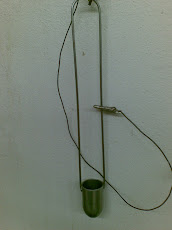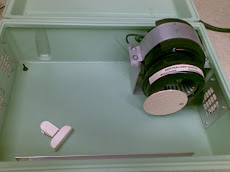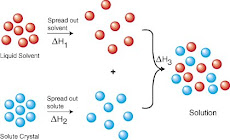Controlling Odors
Using Enzyme Cleaners
By Kassandra Kania
Foul-smelling restrooms are a frequent source of complaints
from building occupants — and a challenge for custodians charged with
controlling odors and keeping restrooms clean and fragrant. Continual use makes
controlling odors difficult, and masking malodors often intensifies the
problem. To rid restrooms of offensive smells, custodial departments need to
eliminate the cause of the odor — namely uric acid — and this is where
traditional cleaners often fall short, say distributors, who instead stress the
use of enzyme cleaners when controlling odors.
“Typically, in restrooms, the biggest issue is the smell of
urine,” says Jim Flieler, vice president of sales at Swish Maintenance Ltd. in
Peterborough, Ontario, Canada. “Often, urine splashes to floors and gets into
the grout, causing a uric acid odor that’s offensive. Once it embeds itself in
grout, traditional cleaners cannot get rid of that smell, and it doesn’t help
that most restrooms have poor air filtration.”
While the majority of custodial departments still favor
all-purpose cleaners for restrooms, some are beginning to introduce
enzyme-based cleaners into their cleaning regimens to remove or control odor
causing bacteria, particularly in hard-to-reach porous surfaces.
Anthony Crisafulli, owner of Atra Janitorial Supply in
Pompton Plains, N.J., has had tremendous success selling enzyme cleaners,
specifically in K-12 school districts.
“In any facility, not just schools, the chief complaint is
the odor coming out of the bathrooms,” he says. “If you can control odors,
people aren’t going to complain as much if the bathroom’s a bit dirty. It’s the
odors that kick up those complaints so quickly.”
An Introduction to
Enzyme Cleaners
To understand how enzyme cleaners — also known as
bio-enzymatic cleaners — can be advantageous in restroom cleaning, custodial
managers need to first understand what they are and how they work.
In essence, enzymes are chemicals made by bacteria to digest
waste. Enzyme-based cleaners contain enzyme systems that break up waste
molecules, which are then digested by the bacteria and converted into carbon
dioxide and water. The waste that generates foul odors in the restroom serves
as food for the microorganisms.
According to Eric Cadell, vice president of operations for
Dutch Hollow Supplies, Belleville, Ill., there are two types of enzymatic
cleaners: those that contain surfactants and those that don’t.
“In both cases, the enzymes are kept dormant until they come
into contact with the food source,” Cadell explains. “That food source is going
to be body fats, oils and uric acids. Typically the enzymes are mixed with
water, which awakens them, and they immediately start looking for that food
source. If they can’t find that food source, the enzymes will die.”
Because the enzymes remain active as long as the food source
is present, they are most often used on restroom floors, around and below
toilets and urinals, in drains and in grout lines.
“Most floors in restrooms are grouted ceramic tile,” says
Crisafulli. “Many custodians are trained to mop and clean their floors with
general purpose cleaner, but that doesn’t get into the grout lines and clean
the subsurface. We know that urine penetrates into those grout lines, and
general surface type cleaners just don’t clean that deeply.”
When choosing an enzyme-based cleaner, custodial managers
should keep in mind that not all enzymes are created equal. Manufacturers have
developed different strains to target specific types of organic waste.
“There are so many different kinds of enzymes, so managers
want to make sure that the one they purchase is designed for what the staff is
trying to clean,” cautions Cadell. “Enzymes designed for a drain line in a
kitchen, for example, go after oils and fat, so that same product won’t work in
a restroom because it doesn’t eat uric salt.”
Although enzymatic cleaners designed for restrooms are most
commonly used on floors, they can also serve as general-purpose cleaners for
high touch points, such as mirrors, faucets and door handles.
“Part of our goal is to help departments reduce the amount
of different chemicals used when cleaning restrooms,” says Crisafulli. “By
using microfiber technology and enzymatic cleaning products, the custodial
staff can clean an entire restroom with just one product — although we still
recommend disinfecting touch points.”
Performance, Green
Benefits Of Enzymatic Cleaners
Reducing the amount of chemical used in restroom cleaning
can streamline purchasing and product storage. But will managers struggle to
convince custodians to give up traditional cleaning products in favor of
enzymatic cleaners? Distributors agree that once workers understand how
enzymatic cleaners work, educating them on their performance benefits — as well
as the differences between traditional and enzymatic cleaners — may persuade
them to accept these products into their repertoire.
For example, custodial departments concerned with green
cleaning will be pleased to know that enzyme-based cleaners are safe for the
environment, as well as human health, according to distributors.
“They’re not harmful because they’re not caustic, and most
are at neutral pH levels,” notes Cadell.
In fact, in most instances, enzyme-based cleaners eliminate
the need to use harsh chemicals. Additionally, the waste consumed by the
enzymes is converted into carbon dioxide and water.
“That in itself is a green philosophy,” says Cadell. “It’s
not killing anything, and it’s not a surfactant that gets into streams or
wastewater, so it’s not causing any harm.”
One of the major differences between traditional cleaners
and enzymatic cleaners is that enzyme-based cleaners perform residual cleaning;
that is, they continue cleaning well after the product has been applied. This
improved product performance contributes to improved productivity.
“It’s cleaning after you’ve cleaned,” explains Cadell. “When
you use the enzyme cleaners, they start to travel down the p-traps and grout
lines, and after you’ve cleaned and left, they’re still working on the odor
source.”
According to Crisafulli, some enzyme-based cleaners continue
to destroy odor-causing organisms for up to 80 hours, as long as the surface
remains wet and there is a food source present.
“A lot of people say, ‘When I mop my bathroom floor it’s dry
in 15 minutes, so how does the product continue to work if the surface has to
remain wet?’” he says. “The answer is, on a porous floor, like a grouted floor,
the tile may dry but that grout line stays wet for hours, and that’s where we
want a deeper clean.”
Distributors also stress that on non-porous surfaces,
enzyme-based cleaners can penetrate into areas where traditional cleaners can’t
reach.
“Even on something as simple as traditional floor finish on
a vinyl tile floor, there are micro-abrasions and scratches due to normal foot
traffic,” says Crisafulli. “Mopping with a bio-enzymatic cleaner will allow you
to get into those hard-to-clean places and give you that deeper cleaning
ability.”
Proper Handling And
Use of Enzyme Cleaners
In order for enzyme-based cleaners to work correctly,
custodial staffs need to be trained on the proper procedures for handling and
using these products.
“Enzymes have a very short life cycle,” notes Cadell. “They
are kept dormant in a suspension agent until they are diluted with water, at
which point they need to find a food source quickly, or they will die.”
Once the enzymes are activated, they need to be applied
directly to the surface that needs cleaning.
“These are not the type of products you can toss into your
mop water,” warns Cadell. “They’ll start to attack things inside the mop,
because the first place the enzyme touches and finds its food source is the
first place it’s going to attach and eat.”
Cadell recommends spraying the enzymatic cleaner close to
the area being targeted — within a foot or less for grout lines.
If custodians are using enzymatic-based cleaners on touch
points, distributors encourage managers to train staff to target those areas
first, and then move on to urinals, toilets, and finally, floors.
“We suggest workers clean the entire restroom with the
bio-enzymatic cleaner, and then the last thing they do is mop the floors with
it,” says Crisafulli. “Workers should start with dry processes — always working
from high to low — and then work their way from the farthest point in the
restroom to the door.”
Because disinfectants will attack enzymes, distributors
advise custodians to disinfect before using enzymatic cleaners.
“Some managers train their people to go in and spray enzymes
to take care of odors and then use disinfectant on top of that,” says Cadell.
“In these cases, they’ve killed the product before it’s even had a chance to
work.”
The last area to be cleaned with the enzymatic cleaner is
the floor. In addition to training custodians on daily procedures, Crisafulli
advises them to do a restorative-type cleaning on floors every three months
using an enzymatic cleaner.
“If we have a lot of odor complaints, we’ll do an evaluation
and find that it’s usually because of the floors,” he says. “We’ll encourage
departments to do a deep cleaning or scrubbing with the enzymatic cleaner and
then do a heavy wet mop with the enzymatic cleaner for three or four days in a
row. That way we know the surface is going to stay wet for 24 to 36 hours, and
the enzymatic cleaner will continue to break down the odor-causing bacteria.”
While the industry has been slow to adopt enzymatic
cleaners, Flieler predicts that sales will pick up over the next year due to
safer blends, wider availability and more general knowledge.
“It’s common sense,” he says. “Bio-enzymatic cleaners are
safer to use, safer for the environment and safer for human health. They
continue to clean well after the initial application, and you displace those
potentially disease-causing bacteria. Once we introduce people to these
products and explain what they are and how they work, they never go back.”













































